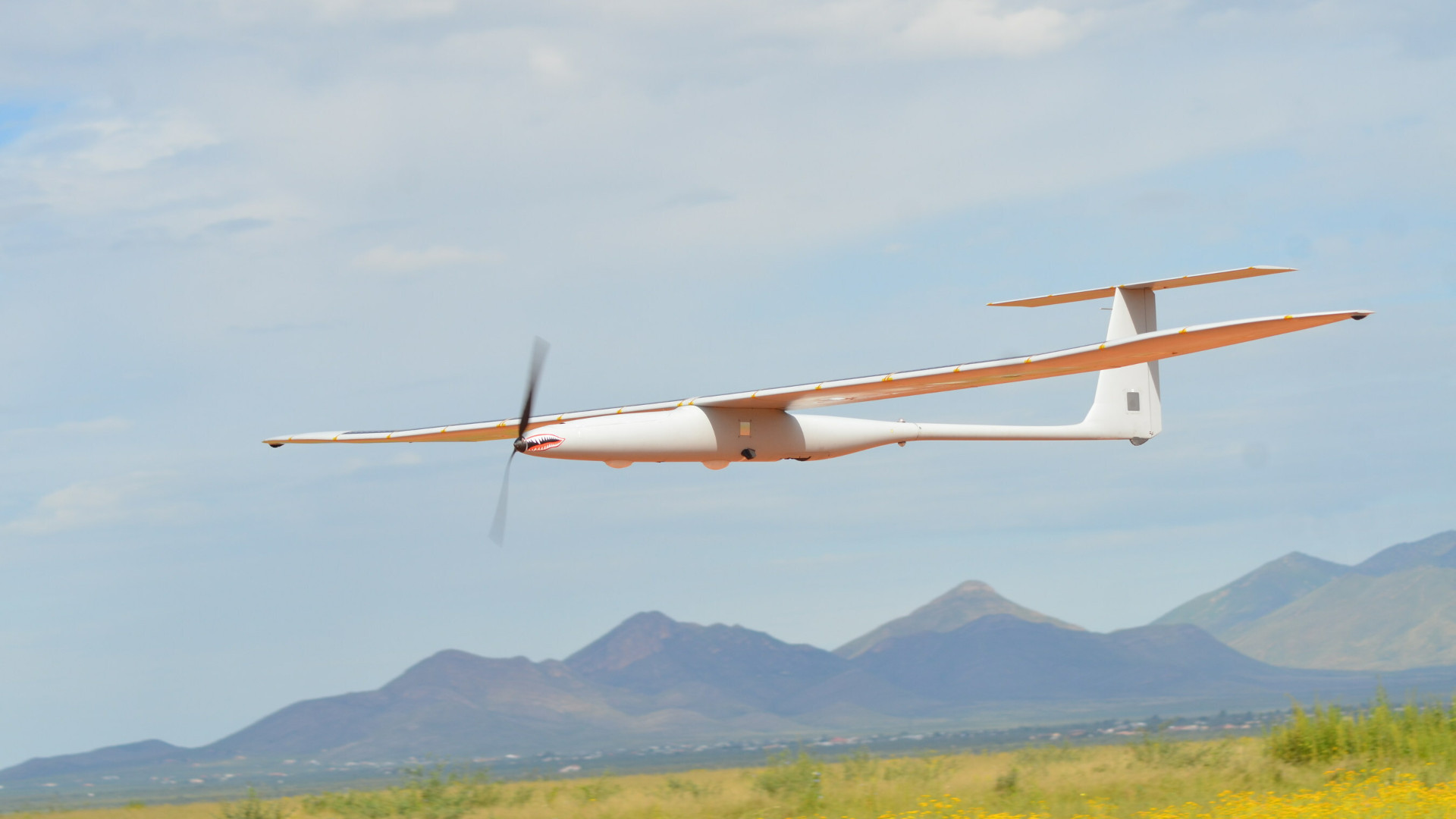
A first-of-its-kind drone designed for endurance, stealth, flexibility, and operational simplicity has found its latest customer in the U.S. Navy.
Kraus Hamdani Aerospace, manufacturer of the solar-powered, ultralong-range K1000ULE uncrewed aircraft system (UAS), last week won a contract to provide the Navy with its first UAS capable of electric vertical takeoff and landing (eVTOL). The contract was agreed through PMA-263, the Navy and Marine Corps Small Tactical Unmanned Air Systems program office at Patuxent River, Maryland.
KHAero’s K1000ULE is a 100 percent electric, solar-powered, Group 2 UAS. The company claims the aircraft boasts a greater flight endurance than any eVTOL in its category, capable of remaining airborne for 26 hours during a single flight.
The U.S. Marine Corps Small Unit Remote Scouting System will field K1000ULE to enable what KHAero predicts will be simpler, faster, and more cost-effective intelligence, surveillance, and reconnaissance (ISR) operations. The UAS will also enhance the Navy’s beyond visual line of sight (BVLOS) operations in “denied or contested areas.” Operations are fully autonomous, relying on onboard artificial intelligence and autopilot technology.
“Today we live with the prospect of a new era of defense technology in which autonomy and artificial intelligence will become more important,” said Fatema Hamdani, CEO of KHAero. “The Navy wants to discover what’s possible. And we’re honored to give them the solutions they need.”
KHAero claims K1000ULE has the longest endurance of any fully electric, zero-emissions, autonomous UAS in its size and weight category. Its 26-hour flight time comes from a propulsion system that runs on lithium ion batteries and photovoltaics (or solar power), powering a brushless electric motor and folding propeller. The aircraft’s solar technology is licensed by the U.S. Department of Energy, per the company.
KL1000ULE is about 10 feet long with a 16.5-foot wingspan, capable of taking off at a weight of 42.5 pounds and reaching an altitude of 20,000 feet msl. The aircraft cruises at around 30-40 knots, giving it a 1,000 sm (867 nm) range. It can be equipped with electro-optical, infrared, communications and other payloads. In addition, KHAero says it can accommodate any Department of Defense MOD Payload compliant payload.
KHAero’s focus is largely on data, intelligence, and communication services, created using multidrone coordination systems. It aims to service customers in emergency and disaster relief, data and telecommunications, defense, agriculture, oil and gas, climate change, and wildlife preservation.
The company’s system additionally shares information across platforms to allocate aircraft on demand, based on sensor needs. In the case of the Navy, crews across operations will be able to keep informed on the UAS’ status.
A single Navy operator could operate a swarm of K1000ULE drones, creating a “self-aware constellation,” in KHAero’s words, that autonomously makes decisions and performs terrain and airspace deconfliction.
The system is controlled through a wearable tablet interface, which helps the user select a coverage area and launch the correct number of assets within 15 minutes. Operators can review or change the coverage area or mission objectives, view the position, flight time, and battery power of the aircraft, and track how many drones are in the sky.
Before awarding the contract to KHAero, the Navy made sure to vet the aircraft, requesting that the manufacturer demonstrate a range of capabilities. U.S. and international partners deployed it for the first time in March 2023, conducting operations over Aqaba, Jordan, as part of the International Maritime Exercise 2023.
Further evaluations were performed at both KHAero and U.S. government test facilities and overseen by the UAS Research and Operations Center at the University of Maryland. Among the capabilities and technologies tested were flight endurance, vertical takeoff and landing without a runway, and operations in daytime, nighttime, and other environmental conditions.
Removing the runway requirement is a key component of KHAero’s offering. The company also aims to reduce the Navy’s UAS operational footprint from 120-150 to less than five people, performing testing on K1000ULE’s maneuverability. Further, KHAero expects these operations to be nearly undetectable, which it tested by having the Navy track the drone’s audio and visual signatures from the ground.
After gauging K1000ULE’s capabilities, the partners performed reconnaissance, surveillance, and target acquisition tests. They evaluated the aircraft’s full motion video capabilities, which can identify and classify targets, among other mission systems packages.
The Navy could use the UAS to scout an unidentified vehicle, track enemy force movements, shadow friendly troops on the move, or perform other ISR tasks. KHAero is among several aircraft and technology manufacturers collaborating with the U.S. military—Archer Aviation, Pivotal, Xwing and many others are working with the Air Force via its innovation arm, AFWERX.
Like this story? We think you’ll also like the Future of FLYING newsletter sent every Thursday afternoon. Sign up now.
Discover more from reviewer4you.com
Subscribe to get the latest posts to your email.




